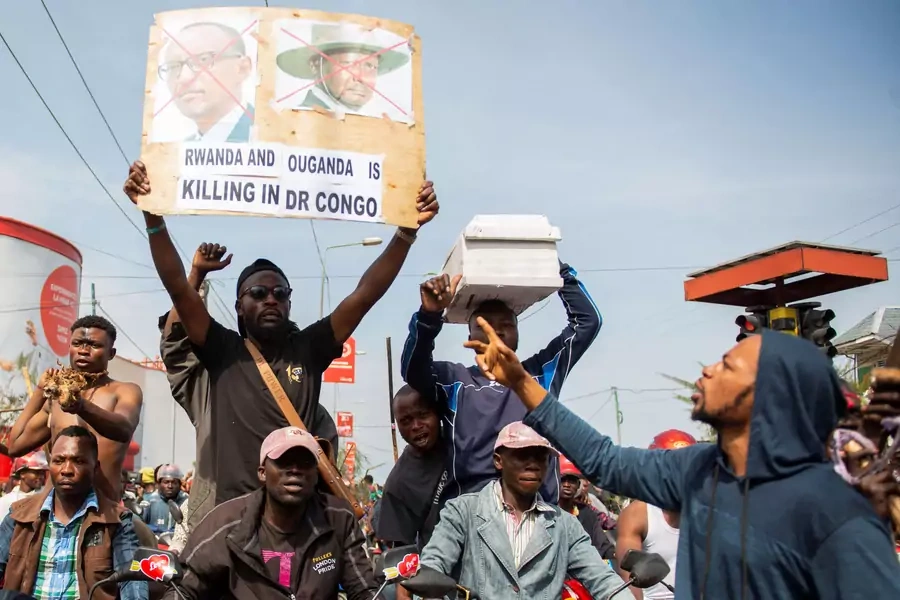Dangerous Trends in Eastern Congo

In the last few weeks, the M23 rebel group made meaningful territorial gains in its military campaign in eastern Democratic Republic of Congo (DRC), triggering new waves of displacement and leaving the important city of Goma on edge. Rwanda has supported M23 in the past, and credible reports indicate that it is doing so again. The latest military developments have helped fuel virulent anti-Rwanda, and often anti-Tutsi, sentiment on Congolese social media. The DRC’s President, Felix Tshisekedi, has encouraged young Congolese to organize themselves to defend the country. The prospect of ethnically-targeted vigilante violence injects additional menace into an already desperate situation, and over time, increased insecurity could derail the national election slated for 2023, further alienating the population from the state.
As the conflict and toxic speech have intensified, so too has the diplomatic rift between the DRC and Rwanda. The DRC expelled Rwanda’s ambassador last week, and despite talks held over the weekend to ease tensions, on Monday Rwandan officials accused the DRC of sending a military aircraft into Rwandan airspace. Congolese ire is also being directed at Uganda, which has had military forces operating in eastern Congo since late last year, aiming to root out the ADF rebel group which has wreaked havoc in both countries. That tension is likely to be inflamed by Ugandan General Muhoozi Kainerugaba, the son of Ugandan President Yoweri Museveni, who recently issued an impassioned defense of M23 on social media.
More on:
Meanwhile, the East African Community (EAC) forges ahead in its commitment to pacify the region, with Kenya deploying military forces to DRC to work alongside contingents from Uganda, South Sudan, and Burundi. The failure of a two-decade long UN peacekeeping mission to accomplish this task should temper expectations for the EAC’s intervention, as should the complex interests of participating states like Uganda. The EAC is also reviving a political strategy to complement its security initiative, but its diplomatic efforts will need to coordinate with those of other states, like Angola, that are concurrently working to de-escalate tensions.
As the international dimension to an already complex security crisis grows ever more multi-faceted, it is worth remembering that the Congolese people have generations of experience with interventions from outside actors that robbed them of security, opportunity, and agency in determining their own future. Trust will be hard to earn and easy to lose, and the population may continue to feel that their interests are disconnected from the agendas driving military and diplomatic developments. Given the diversity of interests and relationships among the states involved in military and diplomatic efforts ostensibly aimed at stabilizing the situation in eastern DRC, it’s also important to acknowledge that members of East Africa’s coalition of the willing may sometimes find themselves at cross purposes, and risk becoming ensnared in a web of conflict, undermining regional security rather than enhancing it.
More on:
 Online Store
Online Store